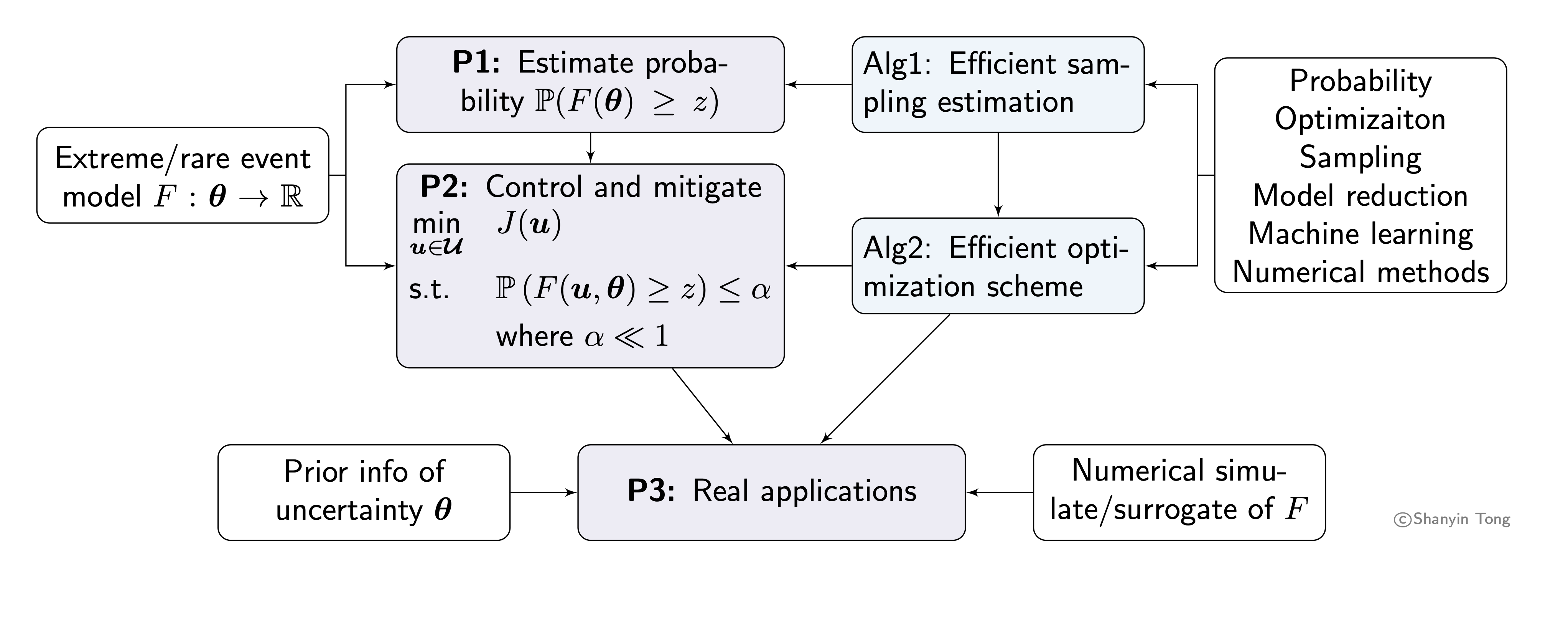RESEARCH


Examples of applications, from left to right: Extreme tsunami waves; Extreme strain in stochastic Navier-Stokes systems; Temperature profile for the optimal boundary control problem; Photoacoustic image reconstruction; Fault-slip inversion.
- Computational inverse problems: model-driven and data-driven approaches [Slides for inverse MFGs]
- Design tailored approaches for different inverse problems, accounting for their model structures.
- Optimal design of the objective function for optimization in learning.
- Study effective schemes to integrate machine learning and model reduction in inverse problems.
- Tools from PDE-constrained optimization, numerical analysis, Bayesian inference, sensitivity analysis, PDE theories, machine learning, and deep learning.
- Uncertainty quantification of extreme events in complex systems
[SIAM News Link, Slides]
- Design efficient algorithms for estimating the probability of extreme events in complex systems with high-dimensional uncertainty.
- Build theoretical connections between probability and optimization through large deviation theory.
- Deep generative models for rare event studies; Data-driven surrogate encoding tail information.
- Tools from applied probability, optimization, statistics (sampling and inference), scientific computing (numerical discretization and dimension reduction), and machine learning (distribution learning such as normalizing flows and diffusion models).
- Optimization under uncertainty [Slides]
- Develop methods for optimal control to mitigate the impacts of extreme events, with a focus on solving optimization problems under rare chance constraints.
- Challenges often arise from the iterative or bilevel structure of optimization and PDE constraints, requiring both theoretical convergence analysis and efficient computational methods.
- Enforce constraints in learning to ensure fairness and safety for data-driven models.
- Study potential connections to dynamic programming and reinforcement learning.
- Reliable and fast implementations for real-world applications
- Inverse problems arising arising in physics, engineering and data science: Medical imaging, seismic inversion, and inversion of environmental information in games (inverse mean field games).
- Extreme events in complex systems: Design wave breaker for mitigating tsunami hazards, and design wall around lower Manhattan to prevent flooding and storm surges.
- Digital twins: Build a feedback loop between physical models and their digital twins, enabling inversion and rare event control dynamically, with application to autonomous vehicles.
- Scientific Computing --- Implementations and Software
- 3D Biot Savart law on both CPUs (OpenMP) and GPUs (CUDA) [Git Repo Link]
- Fast multipole method for computing electrostatic interactions in 2D [Git Repo Link]
- SimCLR algorithm for self-supervised learning for image classifications [Git Repo Link]
- Online adaptive model reduction for shallow water equations [Git Repo Link]
© Shanyin Tong